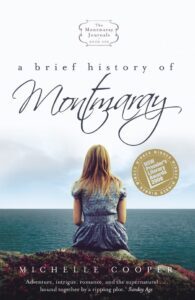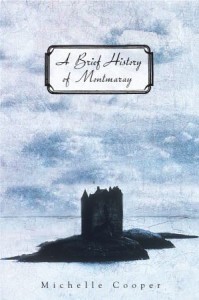Same Book, But Different
First published on the Centre for Youth Literature website, Inside A Dog, in 2012.
If you’re a Harry Potter fan, you’re probably aware that the first book in the series, Harry Potter and the Philosopher’s Stone, was published as Harry Potter and the Sorcerer’s Stone in the United States. Apparently, the US publishers thought American children would be put off by the idea of reading about a philosopher. What you might not know is that the US publishers also made more than eighty changes to the story itself, which you can read about at the Harry Potter Lexicon. For example, ‘dustbin’ was translated as ‘trash can’, ‘jumper’ turned into ‘sweater’ and ‘lolly’ became ‘candy’. Some of the changes seem pretty silly to me – surely American readers can work out for themselves that ‘multi-storey car park’ means the same as ‘multilevel parking garage’. It was interesting to see that as the series progressed, the changes became fewer. By the final book, Harry Potter and the Deathly Hallows, there were only a couple of vocabulary changes in the American edition (‘crib’ to ‘cot’, and ‘kitchen dresser’ to ‘kitchen sideboard’).
But it’s not just best-selling fantasy series that get tweaked for different publishing markets. If you happen to have read both the Australian and the North American editions of my first Montmaray book (and I’m not sure why you would have, but anyway), you might have noticed that they’re different books. I don’t just mean they have different covers. The words inside the covers are quite different.


There are a couple of reasons for this. Firstly, the North American edition of A Brief History of Montmaray came out more than a year after the original Australian edition, which gave us time to fix up some things that needed fixing. I trimmed the first section of the book, because the pacing was a bit slow (some people still think it’s too slow). I threw out the final chapter and rewrote it. There was also a scene that I thought could be more exciting and dramatic, so I rewrote that – which meant I also needed to change the location of one particular building, which led to minor changes in other parts of the book.
Then there were a lot of ‘But American teenagers won’t understand this!’ changes. Sometimes I went along with my American copy-editor’s suggestions, and sometimes I didn’t. For example, I was advised to take out some of the real history, because American teenagers would find it confusing or boring. Maybe they would, but Australian teenagers had managed to understand those bits. Are Australians smarter than Americans? I don’t know, but generally, I think teenage readers (especially the ones who choose to read long historical novels) are pretty smart. If they come across something new, they’ll use context to get the general idea of what it means. Or they’ll Google it. Or they’ll ask someone. Or they’ll just keep reading, figuring that if it’s important, there’ll be more about it later on in the book. At least, that’s what I do when I come across something unfamiliar in a book – which happens all the time to me. What’s the point of reading if you only read about stuff you already know?
Apart from the historical facts, there was also a lot of arguing about particular words. For example, in Australia, a ‘jumper’ is a long-sleeved top, usually knitted from wool. But for Americans, a ‘jumper’ is a collarless, sleeveless dress, worn over a blouse. Our ‘biscuit’ is an American ‘cookie’, whereas what Americans think of as a ‘biscuit’ would probably be called a ‘scone’ here. In the case of the Montmaray books, the vocabulary issues were complicated by my narrator speaking a posh 1930s version of British English. Sophie didn’t say ‘toilet’, ‘perfume’ or ‘mantlepiece’ – she said ‘loo’, ‘scent’ and ‘chimneypiece’. Having done a lot of research to ensure her language was authentic, there was NO WAY I was going to have Sophie suddenly talking about ‘cookies’ and ‘sweaters’. On top of that, the US edition had to use American spelling and punctuation, which is different to Australian (and posh 1930s British) spelling and punctuation.
The good news for me was that, just as with the Harry Potter series, my editors asked for fewer changes as the series went on. Maybe they figured that readers who’d made it through the first book would be able to cope with the characters eating ‘biscuits’ rather than ‘cookies’, and using ‘torches’ rather than ‘flashlights’, and so on. Or maybe my editors just got tired of arguing with me. Anyway, the final Montmaray book is pretty much the same book, no matter where in the world you happen to buy it. Apart from the spelling and the punctuation. Don’t get me started on how Americans use commas…
Next: Life in Wartime. Keep Calm and Carry On!



